How to Fix Driver Power State Failure on Windows 11
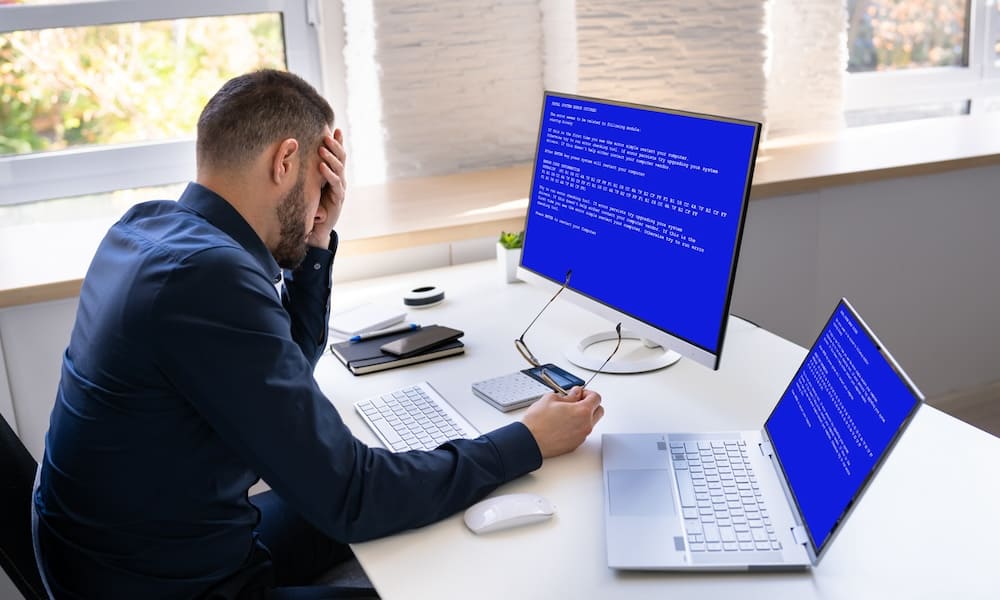
Is your computer crashing due to a driver power state failure? Here’s how to fix a driver power state failure on Windows 11.
We’ve all experienced the strange sensation of part of our body going to sleep. When your entire body is asleep, everything is fine, but when you’re awake, and your foot has gone to sleep, it feels very weird indeed.
Your computer can go to sleep too, to save power. Software is suspended, and hardware may be disabled or put into a low-power mode. As long as your entire computer is asleep, all is well. What happens if the rest of your computer is awake, and one part of it remains asleep?
Well, one possible result is that you get a Blue Screen of Death (BSOD) informing you that something has gone wrong with your computer. Specifically, you get a driver power state failure BSOD. As with any BSOD, this could lead to you losing data or hours of your hard work. The good news is that there are some steps you can take to stop this error from occurring again. Here’s how to fix a driver power state failure on Windows 11.
What is the Drive Power State Failure Error on Windows 11?
When your computer crashes and you see the Blue Screen of Death (BSOD) you’ll see a small bit of text at the bottom of the screen indicating the cause of the crash. One such error code is DRIVER_POWER_STATE_FAILURE. This error is caused by problems with devices not waking from sleep when you’re using your computer and is because of issues with the device drivers or the power settings. There are a few fixes that you can try to fix this error.
Update Drivers
Your drivers are one of the most likely causes of the driver power state failure error. In particular, the drivers for your network adapter and display adapter are likely to be the culprits, but you should also update any other drivers that are marked as being problematic.
- Right-click the Start icon in the taskbar.


- Select Device Manager.


- Click the arrow next to Display Adapters to expand it.


- Right-click the display adapter and select Update Driver.


- Select Search Automatically For Drivers.


- If updated drivers are found, you can install them.
- If not, you’ll see a notification that you’re already using the best available drivers.
- Repeat the process for all of your Network Adapters.


- If any other devices have a yellow warning triangle, repeat the steps above to update those drivers. You’ll need to expand each device type to see the symbols.
- Repeat until there are no more devices with warning symbols.
- Restart your computer.
Roll Back Drivers to Address a Driver Power State Failure
If your display and network adapters were both found to be up to date, you can try rolling them back to previous versions instead. It may be that the drivers have recently updated, and that the current versions are the cause of the problem.
- Right-click the Start icon in the taskbar.


- Select Device Manager.


- Click the small arrow next to Display Adapters.


- Right-click the display adapter and select Properties.


- Select the Driver tab.


- Click the Roll Back Driver button.

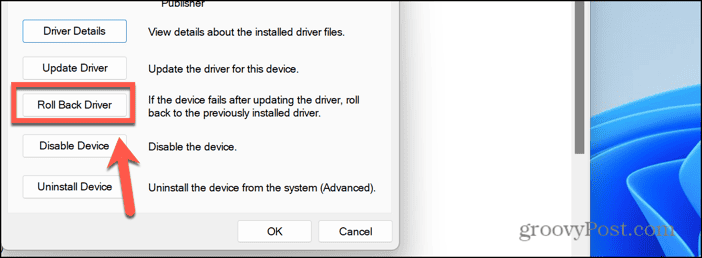
- Select the reason you want to roll back and click Yes.

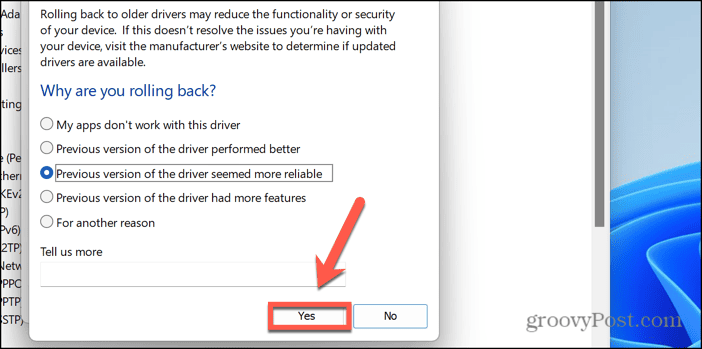
- The current driver will be replaced with the previously installed version.
- Restart your computer.
Turn Off Sleep Mode
Since the driver power state failure error is caused by devices failing to wake from sleep, turning off sleep mode for your computer may be able to fix the problem. You can change your settings so that your computer never goes to sleep unless you manually put it in sleep mode. Changing this setting does mean that your computer will use more power, however, as it won’t go into a low-power sleep mode.
- Right-click the Start icon in the taskbar.


- Select Settings.

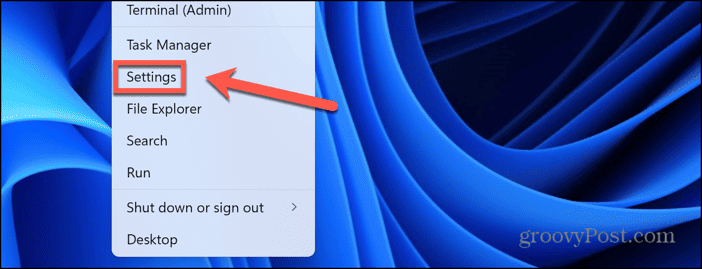
- In the left-hand menu, select System.


- Click Power.


- Under Power, select Screen and Sleep.


- Change When Plugged In, Put My Device To Sleep After to Never.


- If you’re using a laptop, change On Battery Power, Put My Device To Sleep After to Never.
- Your computer will no longer go to sleep unless you manually put it to sleep.
Change the Power Settings
Windows 11 also has some more advanced power settings that relate to specific components of your computer. You can change the power settings of some of these components to stop them from going to sleep. This may fix your driver power state failure error, although it will mean that your computer uses more power.
- Type Control Panel into the search field in the taskbar.


- Select the Control Panel app from the results.

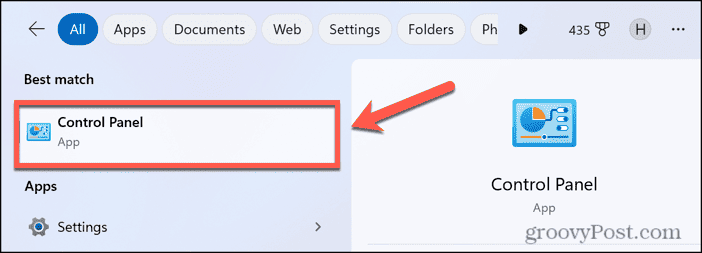
- Click Hardware and Sound.

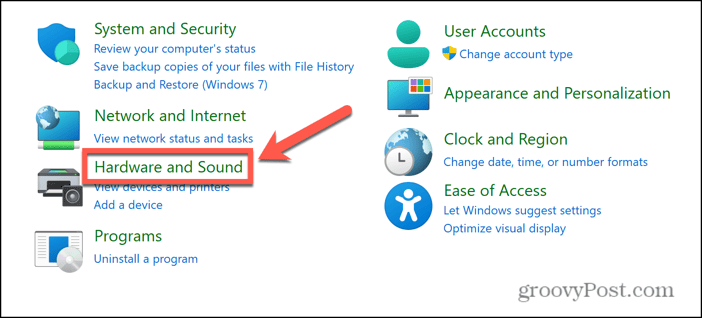
- Under Power Options click Change Power-Saving Settings.


- Click Change Plan Settings next to your current power plan.

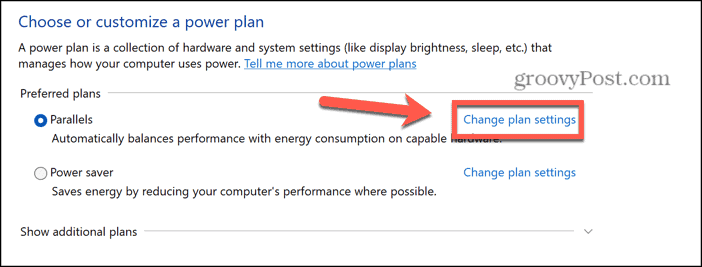
- If you already turned off sleep mode as described in the section above, Put The Computer to Sleep should read Never. If it doesn’t, you can change it to Never here to stop your computer from sleeping if you wish.


- Click Change Advanced Power Settings.


- Click the + (plus) icon next to Wireless Adapter Settings and then expand Power Saving Mode.


- Click the current setting.


- Select Maximum Performance from the drop-down.


- Expand PCI Express by clicking the + (plus) icon.


- Click the current setting.


- Select Off from the drop-down to stop the device from going to sleep.


- Click Apply to save your changes.
- Restart your computer.
Remove External Hardware
If you’ve recently added any new external hardware to your computer such as a webcam or external hard drive, you can try removing this device temporarily. Restart your computer and see if the driver power state failure error stops. If it does, you know that the issue is with your external device; you can either leave the device disconnected or try to troubleshoot the problem with the external device.
Run System File Checker
System File Checker (SFC) is a Windows utility designed to find problems with system files on your computer. If any corrupt files are detected, the tool will download and replace the affected files.
- Right-click on the Start icon.


- Select Terminal (Admin).

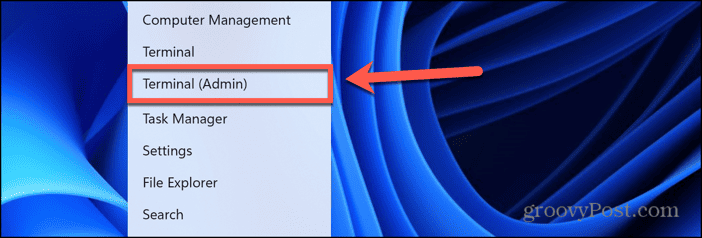
- Grant Terminal the ability to make changes to your computer.
- Type sfc /scannow. You should ensure there is a space after sfc or the command won’t work.


- The System File Check scan will start. It can take a while to perform.
- Eventually, you’ll see a message reading Verification 100% Complete. Type exit and press Enter to quit the tool.


- Restart your computer.
Reset Windows
Another possible fix is resetting your computer. This performs a clean install of Windows while keeping your files and folders intact. Since everything is restored to factory settings, this may help to solve your driver power state failure issues.
- Right-click the Start icon in the taskbar.


- Select Settings.


- Click System in the left-hand menu.


- Scroll down and click Recovery.


- Click the Reset PC button.


- To ensure your files aren’t deleted, select Keep My Files.

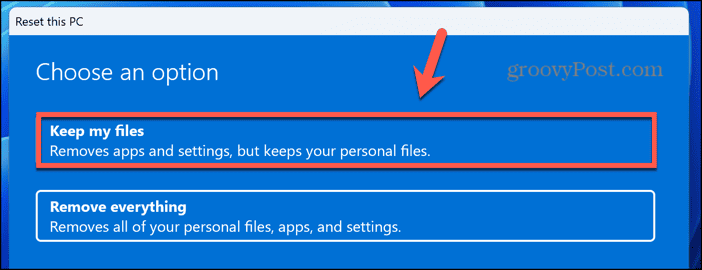
- Decide if you want to install from a Cloud Download or a Local Reinstall.
- Click Reset.

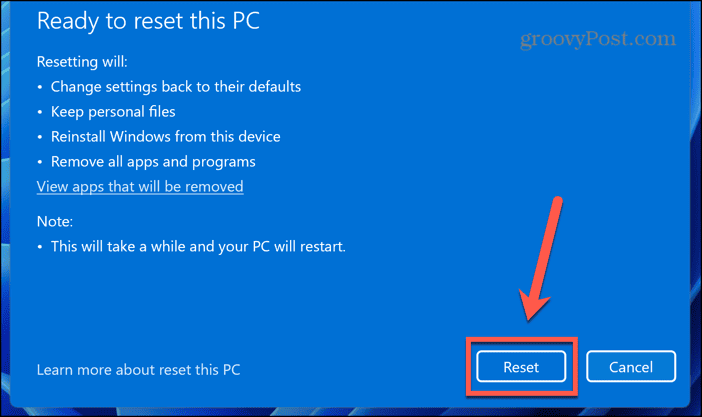
- Your computer will be reset.
Fixing the Driver Power State Failure Error on Windows 11
Learning how to fix driver power state failure on Windows 11 can help reduce the number of frustrating crashes that your computer might experience. Hopefully, one of the fixes above will solve your issue. If you find any other useful solutions, please let us know in the comments.
Sadly, BSODs are part of living with a PC. The best advice is to save regularly and back up important files and folders so that if the worst happens, you don’t lose everything.
Leave a Reply
Leave a Reply
















































